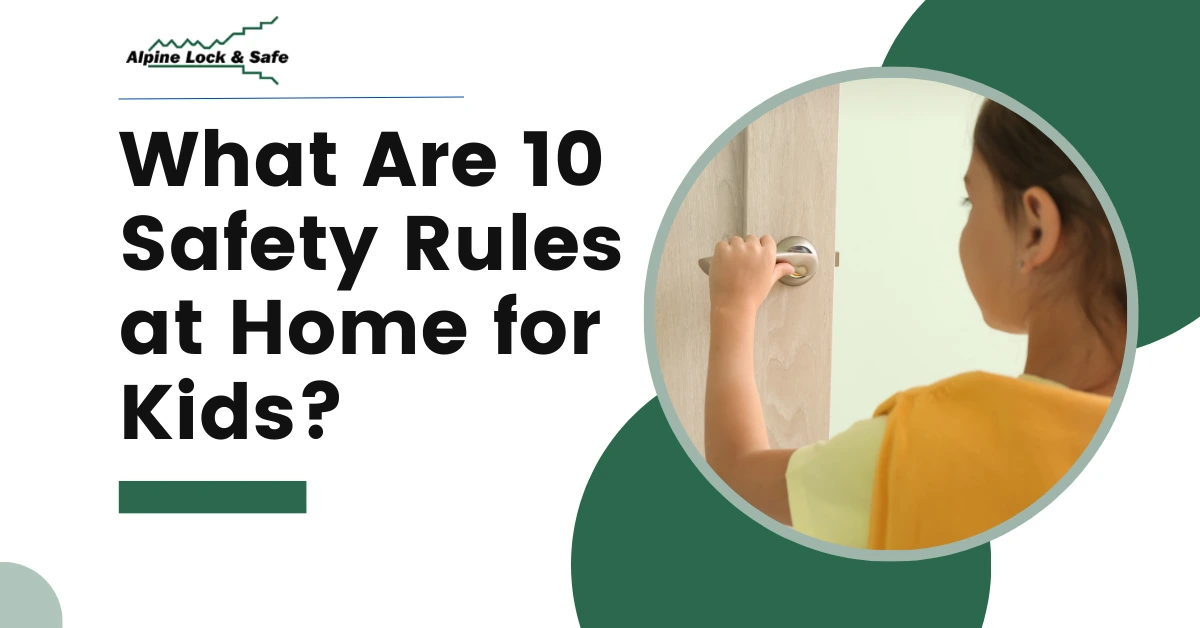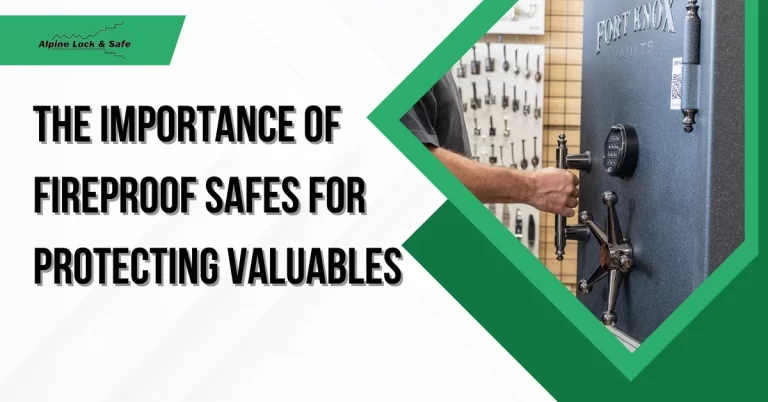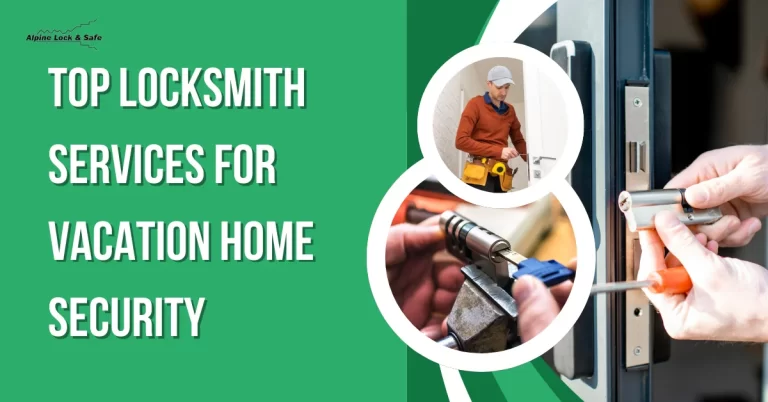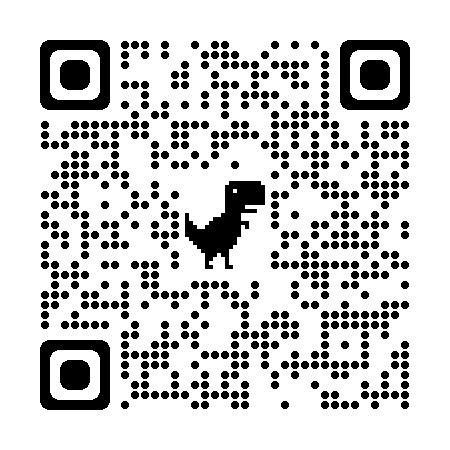To keep your kids safe at home, never leave them alone near water, like pools or bathtubs. Keep hazardous chemicals and medicine out of reach, atop high shelves or locked cabinets. Make sure their bedroom lacks any hazards and that electric sockets are childproof. Familiarize them with the function and sound of smoke alarms. Store household tools out of sight and teach the importance of respecting fire to prevent mishaps. Always keep medicines away from their access. Educate them about basic CPR and first-aid. Ensuring these guidelines will greatly heighten your home’s safety environment. There’s a load of extra tips awaiting your exploration!
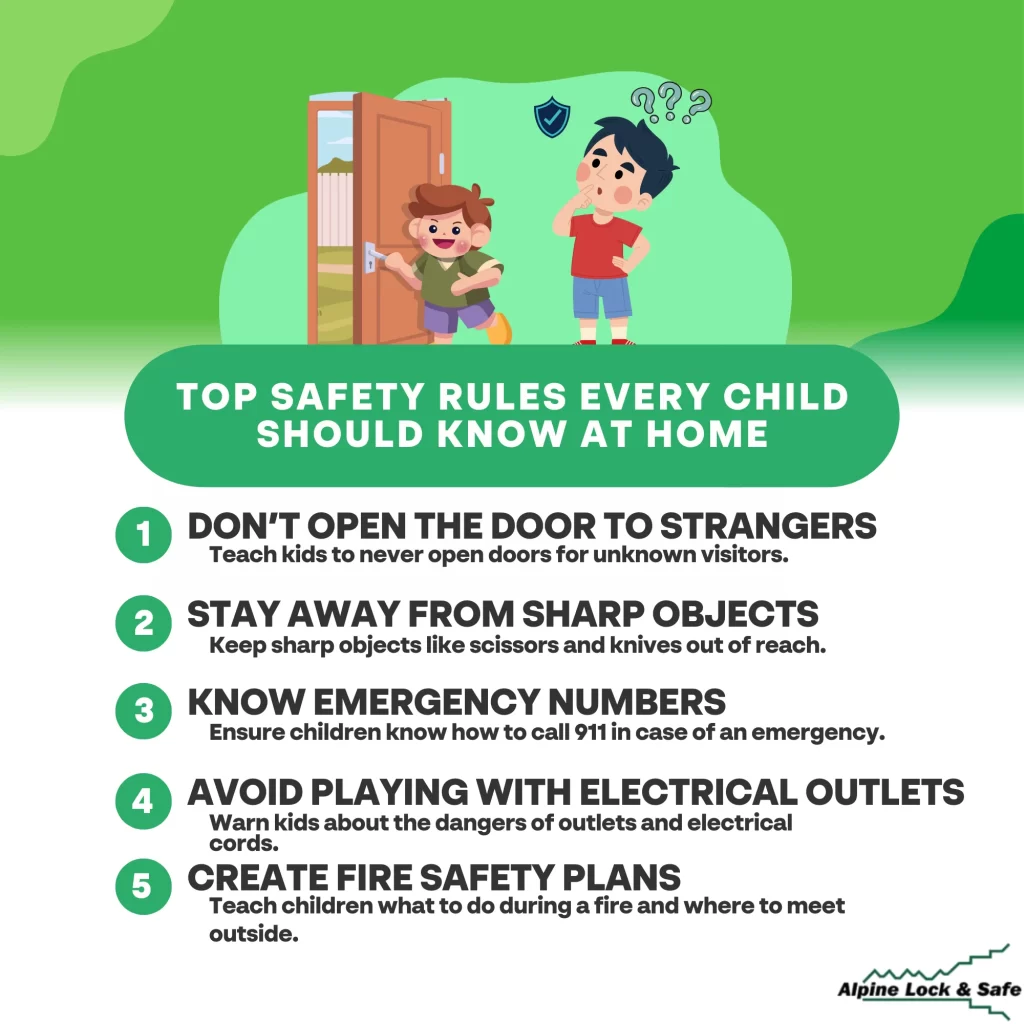
Key Takeaways
- Teach children the importance of avoiding water bodies like pools or bathtubs without adult supervision.
- Ensure all harmful chemicals and medications are stored out of children’s reach in locked cabinets.
- Regularly practice fire drills and educate children on the fire escape plan and smoke alarm functions.
- Install tight-fitting socket covers and teach about the dangers of electrical sockets.
- Keep household tools stored out of sight and explain their potential dangers to children.
Do Not Leave the Kids Alone in Water
Whether it’s a pool, bathtub, or even a bucket of water, never leave your kids alone near it. This is one of the cardinal safety rules for kids at home. You might think it’s safe because you’re just stepping away for a moment, but it takes only a few seconds for a child to slip or tip over into the water.
Make certain that the bathroom door is always closed and use safety latches on toilets. If you have a pool, secure it with a sturdy, childproof fence. Teach your kids about water safety as soon as they’re old enough to understand. Make sure they know never to go near water without adult supervision.
It’s also essential to learn CPR and keep emergency numbers handy. Remember, it’s not just about preventing accidents; it’s about being prepared if they happen.
These precautions may seem simple, but they’re important. The safety of your children should never be compromised.
Keep Hazardous Chemicals Out of Kids Reach
While it’s common to store cleaning supplies, medicines, and other potentially harmful chemicals in easy-to-reach areas for convenience, it’s crucial to rethink this for the safety of your kids.
If you’re not careful, these substances can pose serious risks, including poisoning or physical injuries.
Here’s a quick rundown of safety rules at home to prevent such accidents:
- Store hazardous chemicals on high shelves or locked cabinets. Kids can’t reach them there.
- Always keep products in their original containers. That way, you’ll not confuse them with something safe.
- Dispose of unused or expired chemicals properly. Don’t let them be a danger lurking in your home.
- Educate your kids about the dangers of these substances. Make sure they know they’re off-limits.
- Keep the poison control center‘s number handy. It can be a lifesaver in emergencies.
Children’s Bedroom Should be Hazard-free
Guaranteeing your child’s bedroom is hazard-free is an essential step towards maintaining their safety at home. You can start by inspecting the room for any potential hazards. Look out for sharp edges on furniture that can cause cuts or bruises. You might want to cushion these edges or corners to prevent accidents.
One of the important safety rules for kids is to guarantee that toys are age-appropriate and don’t contain small parts that could be a choking hazard. Regularly check toys for broken parts, and always supervise playtime with toys that have smaller components.
Also, make certain toys, especially heavier ones, are stored on low shelves or in boxes to avoid toppling incidents.
Your child’s bed should be sturdy and meet all safety standards. Avoid bunk beds for younger kids as they can be a falling hazard. Proper lighting is also essential for safety, so install a night light if needed.
Keep windows locked or install safety bars to prevent falls. Curtains and blinds cords should be out of reach to avoid strangulation hazards.
Childproof Electric Sockets
Moving on to another important aspect of child safety at home – electric sockets. A curious child is naturally drawn to explore every nook and cranny of your home, and unfortunately, that includes electric sockets.
These pose a significant threat if not properly safeguarded, so let’s talk about some safety rules at home for child-proofing these potential hazards.
- Purchase socket covers They’re inexpensive and easy to install. Make sure they’re tight-fitting and challenging for little fingers to remove.
- Use safety plugs: A step up from covers, safety plugs provide a physical barrier, preventing children from inserting objects into sockets.
- Consider tamper-resistant outlets: These have built-in shutters that block access unless two prongs are inserted at once.
- Keep cords out of reach: Don’t let your child use electric sockets as a leverage to pull down appliances.
- Teach your kids about the danger: When they’re old enough to understand, explain why they must avoid playing with sockets.
Teach Children About Smoke Alarms
Every home should have smoke alarms, and it’s equally important that all children understand what they’re and how they work. Smoke alarms are life-saving devices that detect smoke, usually an indication of fire. When smoke reaches the alarm, it sounds off, alerting everyone in the house.
You can incorporate teaching about smoke alarms into your safety rules at home chart. Start by explaining their function and why they’re significant. Then, show your kids where these alarms are located in your home. Teach them the sound it makes and reassure them that it’s there for their protection.
Next, it’s essential to teach them what to do once the alarm goes off. They should know to get low and go – crawling under the smoke to the nearest exit. It’s also critical they understand not to hide and to leave all belongings behind.
Practice regular fire drills so they become familiar with the process. Lastly, remind them never to play with the smoke alarm. It’s a safety device, not a toy. By teaching them these rules, you’re equipping them with the knowledge to react appropriately in case of a fire.
Keep The Doors Locked
One of the most basic yet fundamental safety rules for kids at home is to always keep the doors secured. This simple action can prevent many dangers from entering your home, ensuring your child’s safety.
Now, you might wonder why this safety rule is so significant. Here are a few reasons:
- Unwanted intruders: It’s a scary thought, but unsecured doors can invite unwanted intruders. It’s vital to keep your doors secured, even when you’re at home.
- Wandering kids: Young children often have a curiosity for the outside world. Keeping doors secured prevents them from wandering outside unsupervised.
- Unsupervised activities: Securing doors to specific rooms can prevent children from entering areas where they could potentially hurt themselves, like the kitchen or the bathroom.
- Securing personal belongings: Securing doors also protects personal belongings from being mishandled by curious kids.
- Creating a safe environment: Overall, secured doors create a safer environment for your children.
Keep Household Tools Out of Sight
Just as essential as securing doors, keeping household tools out of sight is another important safety rule when kids are at home. Tools like hammers, screwdrivers, or power tools can pose significant risks. These items, while necessary for home maintenance, can become dangerous in the hands of curious children.
Creating a designated storage area for these tools, preferably up high or in a locked cabinet, is vital. This way, you not only prevent potential accidents but also teach the little ones about the importance of safety rules for kids. It’s about instilling awareness that not all household items are toys.
But remember, the goal isn’t to create a sense of fear, but one of respect for these tools and their potential dangers. Make it a point to explain why you’re storing these tools out of reach. This way, they’ll understand it’s not because you’re keeping something fun from them, but because you’re keeping them safe.
Prevent House Fires
Your home’s safety should be a top priority, and one of the most vital aspects of this is fire prevention.
As part of the 10 safety rules at home for your child, teaching them how to prevent house fires is essential.
Start by teaching them the following:
- Never play with matches, lighters, or candles. Make certain these items are out of their reach.
- Confirm they know not to use any electrical appliances without adult supervision.
- Educate them about the dangers of fire and the importance of not hiding if a fire breaks out.
- Make certain they know the emergency numbers and how to call them.
- Practice a fire escape plan with them regularly.
Keep Medicine Out of Reach
Moving from fire safety, another key area to focus on is medication storage.
It’s essential to keep all medicines out of your children’s reach and sight. This includes over-the-counter drugs, prescription medications, dietary supplements, and vitamins. They can pose a threat if your kids swallow them thinking they’re candies.
One of the foremost home safety tips involves appropriate storage of medicines. Always store them in high cabinets or locked drawers.
You’d think child-resistant packaging would be enough, but it’s not. ‘Child-resistant’ doesn’t mean ‘childproof’. Some children can still get them open, and the delay could make them more determined.
Moreover, never leave medicines out, even if you’ll use them again soon. Kids can act quickly, and it only takes a moment for an accident to happen.
Dispose of unused or expired medicines properly, don’t simply toss them in the trash where a curious child might find them.
Teach CPR and First Aid Kit Components
Emergencies can strike at any time, making knowledge of CPR and first aid essential for every family member. You don’t need to be an expert, but knowing the essential safety instructions can be a lifesaver.
Start with teaching your kids about the components of a first aid kit. It’s not just about band-aids and antiseptics. A well-stocked kit should include:
- Sterile dressings to stop bleeding
- Adhesive bandages in various sizes
- Tweezers to remove splinters or debris
- Antiseptic wipes to clean wounds
- A digital thermometer to check for fever
Next, introduce them to CPR. While it’s not advisable for young kids to perform chest compressions, they can still learn the basics. Teach them to call 911, to check if a person is breathing, and to understand the importance of chest compressions.
Frequently Asked Questions
What Are Some Safety Precautions When Cooking With Children?
When cooking with kids, always supervise them. Make sure they’re using kid-friendly tools, teach them to turn pot handles inward, enforce a no-run zone in the kitchen, and educate them about the dangers of hot surfaces.
How Should Harmful Cleaning Products Be Stored Safely?
You should always store harmful cleaning products out of kids’ reach and sight. Lock cabinets or use safety latches. Don’t leave them unattended while in use. Remember, it’s always better to be safe than sorry.
What Steps Can Be Taken to Secure Furniture to Prevent Toppling Over?
To secure furniture and prevent toppling, you’ll need to anchor it to the wall. Use furniture straps or brackets, they’re your best friends in this mission. Make certain they’re tightly fastened for your kids’ ultimate safety.
How to Teach Children to Handle Pets Safely?
Teaching kids to handle pets safely is essential. Always supervise interactions, teach gentle petting, and explain not to disturb pets while eating or sleeping. Remember, mutual respect is key for a positive pet-child relationship.
What Are Some Safety Tips for Children Playing Outside?
When your kids are playing outside, guarantee they stay in designated areas. Always supervise them, make sure they’re using play equipment correctly, and insist on helmets for biking. Teach them not to talk to strangers.
Conclusion
By instilling these golden safety rules, you’re not just childproofing your home, but also planting seeds of safety awareness in your kids’ minds. These seeds will grow into strong trees that shield them, even when you’re not around. Remember, you’re not just protecting them today, you’re equipping them for a safer tomorrow. So go on, set the safety standards high at home, because your little ones deserve nothing less than a fortress of safety.


